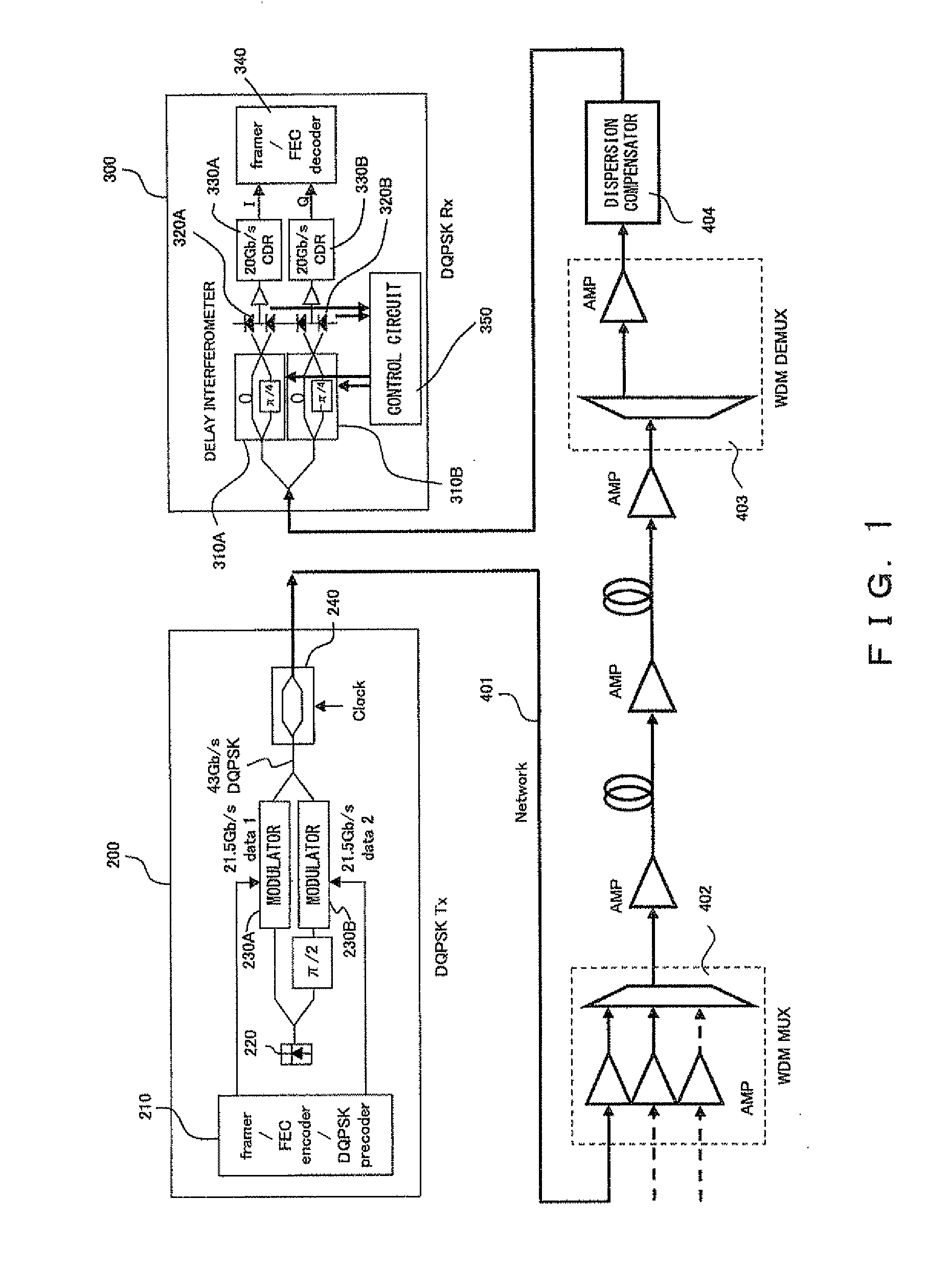Optical dqpsk receiver and optical phase monitor apparatus for use in optical dqpsk receiver
- Summary
- Abstract
- Description
- Claims
- Application Information
AI Technical Summary
Benefits of technology
Problems solved by technology
Method used
Image
Examples
first embodiment
[0087]FIG. 7 shows the configuration of the optical DQPSK receiver according to the first embodiment. In FIG. 3 and FIG. 7, the same numeral indicates the same circuit element.
[0088]In FIG. 7, output signals from a transimpedance amplifier 3a, a transimpedance amplifier 3b and a data recovery circuit 5b are input to a selector 21. The selector 21 selects, from the three signals, two signals specified by a microcontroller 16.
[0089]A mixer 13 multiplies two signals selected by the selector 21. An averaging circuit 14 averages the output signal from the mixer 13. The averaging circuit 14 is realized by, for example, a lowpass filter. The cutoff frequency of the lowpass filter is set to, for example, several kHz to several hundred MHz, when the data transmission rate of the optical DQPSK signal is several dozen Gbps. An A / D converter 15 converts the output signal from the averaging circuit 14 into digital data. The microcontroller 16 controls a common adjustment unit 11 and an individua...
second embodiment
[0140]FIG. 9 shows the configuration of the optical DQPSK receiver according to the second embodiment. Only the circuit for performing the common adjustment procedure is illustrated, and the circuits for performing the individual adjustment procedure and the anomaly detection procedure are omitted from the drawing. Note that the optical DQPSK receiver according to the second embodiment may be configured, in the same manner as the configuration shown in FIG. 7, so that the mixer, averaging circuit, A / D converter and microcontroller are shared.
[0141]The basic configuration of the optical DQPSK receiver according to the second embodiment is the same as that for the optical DQPSK receiver shown in FIG. 3, with the addition of a DEMUX circuit 31. The DEMUX circuit 31 is a 2:N demultiplex circuit, which demultiplexes the data recovered by the data recovery circuits 5a and 5b in the time-division method.
[0142]FIG. 10 shows the operations of the DEMUX circuit 31. FIG. 10 is based on an assu...
PUM
 Login to View More
Login to View More Abstract
Description
Claims
Application Information
 Login to View More
Login to View More - R&D
- Intellectual Property
- Life Sciences
- Materials
- Tech Scout
- Unparalleled Data Quality
- Higher Quality Content
- 60% Fewer Hallucinations
Browse by: Latest US Patents, China's latest patents, Technical Efficacy Thesaurus, Application Domain, Technology Topic, Popular Technical Reports.
© 2025 PatSnap. All rights reserved.Legal|Privacy policy|Modern Slavery Act Transparency Statement|Sitemap|About US| Contact US: help@patsnap.com



